If you’ve had bad luck with houseplants, you might begin to believe you were born with a black thumb. The truth is there are some common things most people are doing wrong. Here are 5 reasons your houseplants are dying and tips to help you learn to keep houseplants alive.
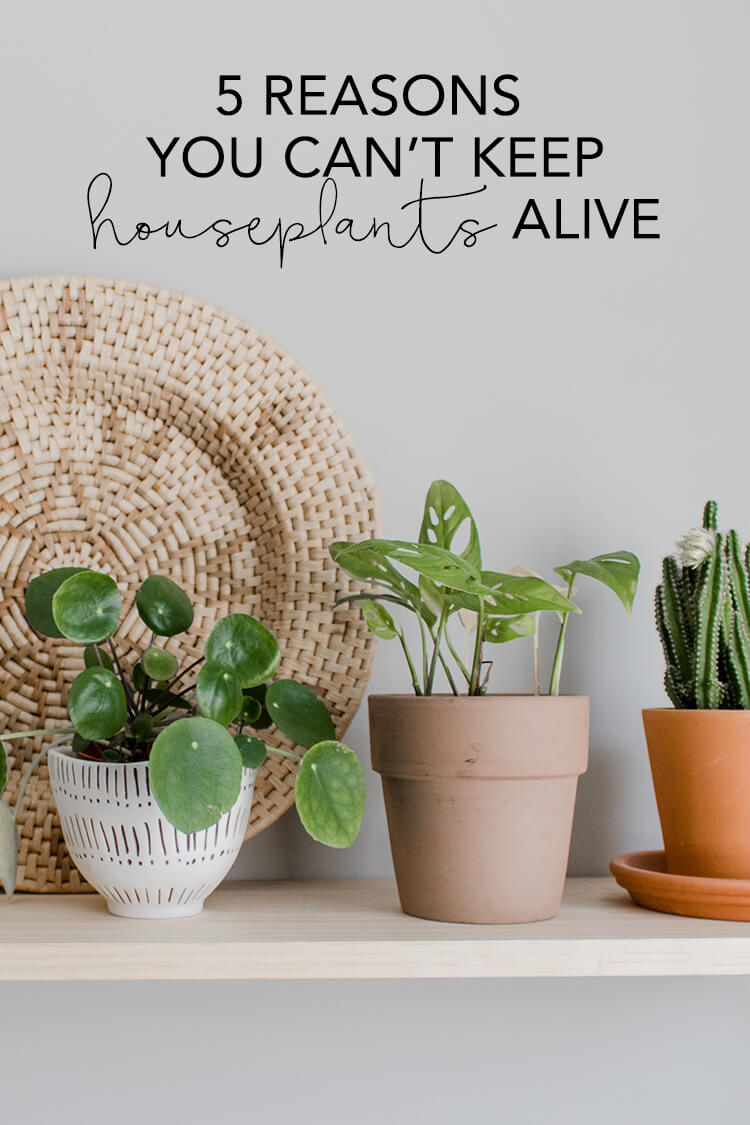
The rules of taking care of houseplants can be a little confusing. All houseplant care revolves around finding the appropriate balance of water, sunlight and soil quality. While it can be a bit of a learning curve, houseplants are simple to keep alive once you become more familiar with what they need.
Beginners typically make a few of the same mistakes when it comes to houseplant care. Once you understand what you’re doing wrong, you can make some simple tweaks to your routine and your black thumb will soon turn green.
The most common houseplant care mistakes are:
- Overwatering
- Not enough sunlight
- Poor drainage
- Wrong fertilization method
- You haven’t researched the specific plan
5 reasons you can’t keep your houseplants alive
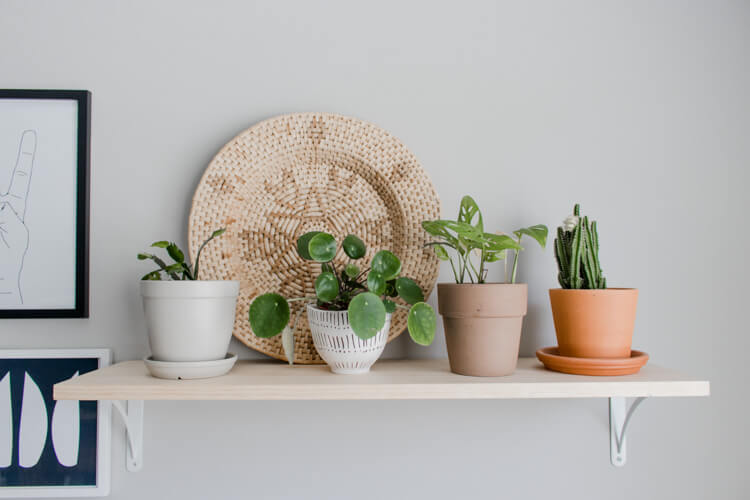
1: You’re overwatering your plants.
We tend to over estimate the amount of water a houseplant needs. The need for water is directly related to how much sunlight the plant is absorbing. Since houseplants are absorbing significantly less sunlight than outdoor plants, they don’t require near as much water.
Most beginners are unsure of the amount of water to give their plants. But the frequency is more important. Give your plants a good watering each time, and let the soil dry out to the plant’s preference in between watering.
When you don’t give the soil time to dry out adequately, it can lead to root rot, a common disease in houseplants.
Sometimes the best thing you can do for a struggling plant is ignore it for a while and see if you were giving it too much attention (aka water).
2: Your indoor plant doesn’t get enough sunlight.
While most houseplant owners overestimate the amount of water their plant needs, they also overestimate how much sunlight their plant is getting inside. The amount of sunlight a plant can absorb inside decreases by more than 50% for every 2-3 feet away from the window it lives.
So many people are looking for easy to care for plants that can survive anywhere. But very few plants can survive across the room from a window. And even “low light plants” that can survive would usually do better closer to a light source.
Decorate the dark corners of your home with fake plants and arrange your living plants around the windows/sunlight in your home.
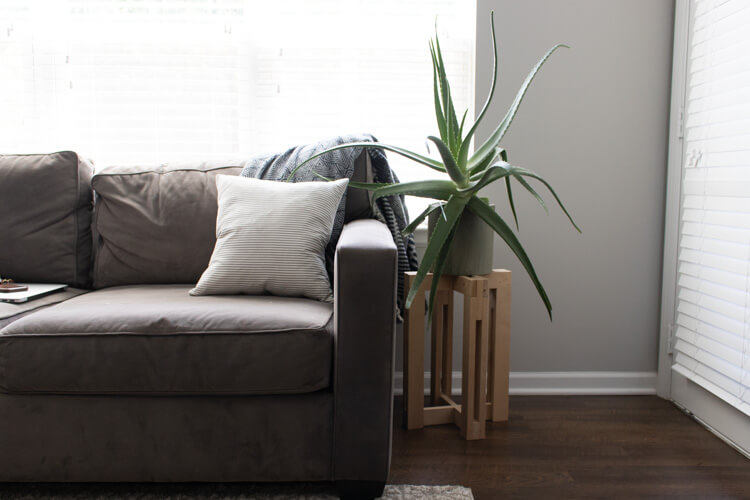
3: Your planters don’t have good drainage.
Drainage is crucial to preventing root rot and letting the soil dry out at an appropriate rate. When your pot has good drainage, you can give your plant a good watering without worrying that it will drown.
There are tons of adorable planters available that don’t have the proper drainage, but they might be killing your plants. A safer bet is a terra cotta pot. They typically have a drainage hole in the bottom and come with a drip tray. And the terra cotta absorbs excess water as well.
If you do decide to use a planter without drainage holes, put small rocks in the bottom of the planter under the soil to create a place for the extra water to go.
4: You’re fertilizing too often or in the wrong amount.
Fertilizing your houseplants with a supplement like MiracleGro can be a great way to keep giving them the nutrients they would receive in their natural environment. Unfortunately, it’s really easy to over fertilize your plants and burn their root systems.
You can also fertilize your plants too often. Most gardeners recommend only fertilizing in the spring in summer during a plants natural growth season.
Another alternative to using a fertilizer altogether is to repot your plants every 1-2 years. If you’re using the appropriate soil for the plant, it should be full of the right nutrients. Over time watering depletes these nutrients. Replacing the soil every couple years replenishes them, and you can replant your houseplant in a bigger pot if needed so the roots have more room to grow and promote more growth.
5: You haven’t taken the time to learn about your plant.
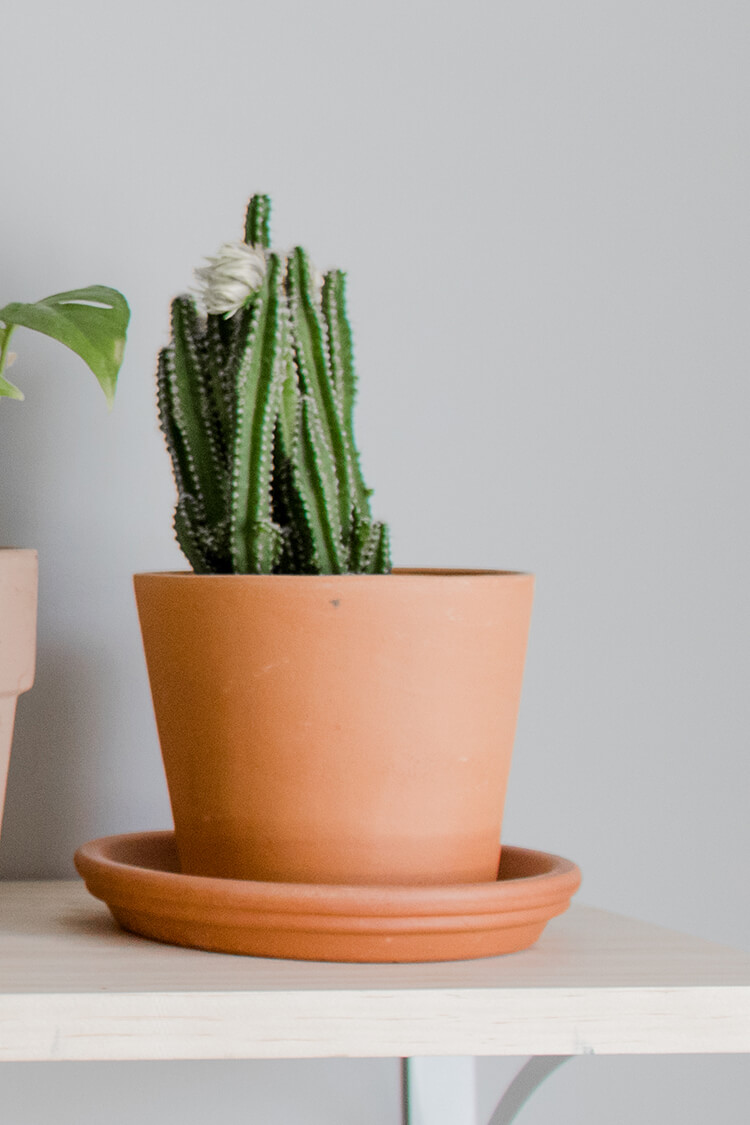
All houseplants have their own needs and quirks. They have different light, soil and watering needs. Luckily, a quick google search can tell you everything you need to know about keeping the houseplant of your choice alive.
Typically you want to try to mirror the plants’ natural environments as closely as possible. For example, a cactus would likely live in the desert in an area with full sun and extreme droughts, followed by downpours of rain. You can mimic this by giving yours as much sunlight as possible, waiting a few weeks between waterings, and giving it a lot of water when you do water it.
A little research goes a long way in being able to take care of your plants the way they prefer.
If you’ve found yourself making these mistakes, now you know how to fix them so you can fill your home with all your favorite houseplants.
If you liked this post about the reasons you can’t keep houseplants alive, pin it!
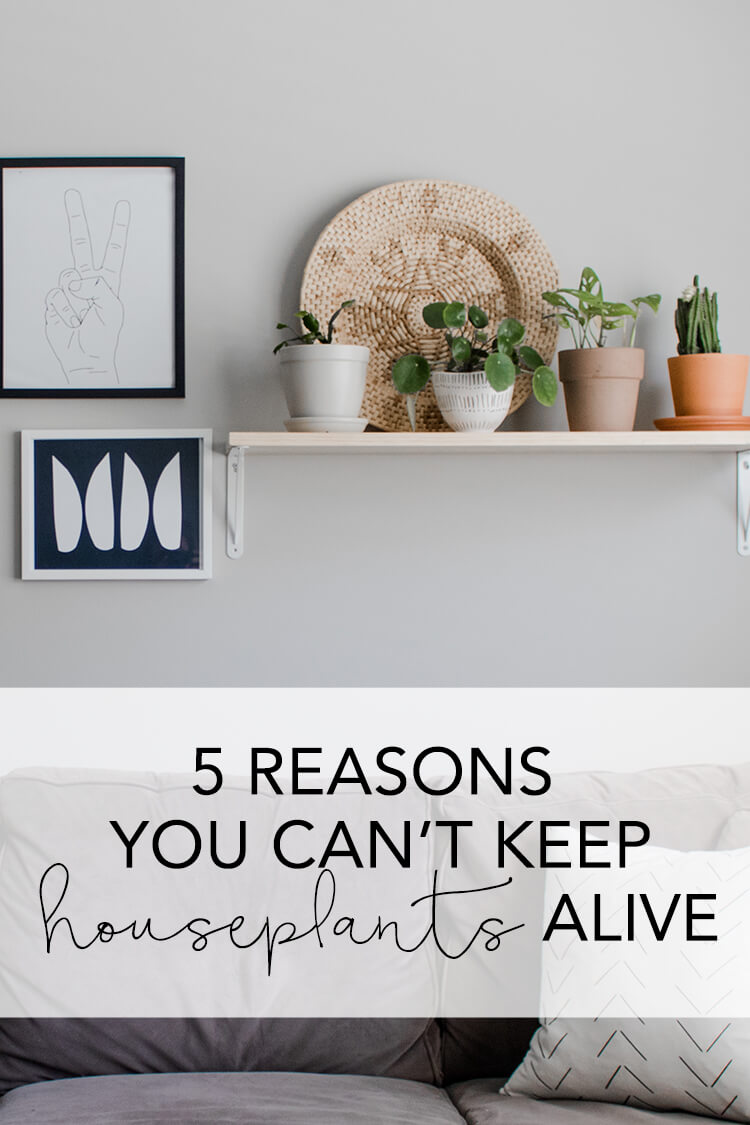




Mary Wallace
Monday 27th of March 2023
I buy mint plants and after I water it Then put a bag over it to help it begin to grow but it still dies even after I let it grow so I don’t know what I am doing wrong with it that it keeps dieing
Nina
Saturday 13th of February 2021
Thanks for sharing. I have also managed to upset a plant by having it in a breezy location it did not like :-(